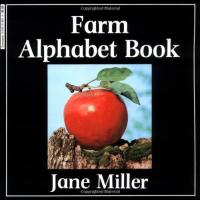Key Information
Focus
Appropriate Group Size
What is alphabet matching?
Alphabet matching is an early literacy activity designed to help young learners recognize the uppercase and lowercase letters of the alphabet. The goal of alphabet matching is to enhance letter recognition skills, which are crucial for reading and writing development. This activity is often introduced in preschool or early elementary education.
Very young learners are developing their understanding of the alphabetic principle — the understanding that there are systematic and predictable relationships between written letters and spoken sounds. Teachers can help students develop this understanding through lots of fun activities for exploring the alphabet letters and sounds.
Why teach alphabet matching?
- Letter naming is a strong predictor of later reading success
- Learning letter names and the difference between uppercase and lowercase letters is a foundational skill in learning to read
- Alphabet matching is a key component of phonics instruction where children learn the sounds associated with letters (the alphabetic principle)
How to teach alphabet matching
Here are some activities and games to try:
- Uppercase to Uppercase Matching: In this activity, students match uppercase letters to other uppercase letters. This can be done using cards, puzzles, or other interactive materials.
- Lowercase to Lowercase Matching: Similar to uppercase matching, students match lowercase letters to other lowercase letters. This helps reinforce the connection between uppercase and lowercase forms of letters.
- Uppercase to Lowercase Matching: This activity involves matching uppercase letters to their corresponding lowercase counterparts. For example, matching “A” to “a.”
- Puzzles and Games: Alphabet puzzles with pieces that fit together, memory card games, or interactive computer games can be used to make alphabet matching more engaging.
- Interactive Apps and Online Resources: Many educational apps and online resources are available that provide interactive alphabet matching activities. These tools often incorporate sounds and animations to make learning more enjoyable.
- Letter Magnets: Using magnetic letters, students can match uppercase and lowercase letters on a magnetic surface like a whiteboard or a cookie sheet.
- Flashcards: Uppercase and lowercase flashcards can be used for matching exercises. Students can either match the cards or play games like memory with the cards facing down.
Watch a letter naming activity (individual)
An adult and a young learner practice letter names with this matching alphabet game. (Florida Center for Reading Research)
Watch a lesson on sound-letter dictation (whole class)
At Prather-Brown Center in Frederick, Oklahoma, teacher Monica Peevyhouse helps her students practice writing letters through sound-letter dictation. (From our sister project, Reading Universe )
Collect resources
Letter recognition
Alphabet arc letter names
This free printable activity helps students practice recognizing lowercase and uppercase letters, and reading letter names and letter sounds aloud. You can use Alphabet Arc in small groups or have students work independently. See example
Missing letters
This free printable activity helps students practice ABC order and recognizing lowercase letters. Students can work in small groups or with a partner. See example
Alphabet arc letter names
Use this activity with students to practice recognizing lowercase and uppercase letters, and reading letter names and letter sounds aloud. See example
Letter bingo
Bingo is a simple game that children enjoy and can be used to help them learn about the uppercase and lowercase letters. With this downloadable, you can print the letters and board needed to play letter bingo. See example ›
Flash cards
These printable color flashcards that are great for teaching uppercase and lowercase letters. See example ›
Letter recognition fluency
This packet from the Florida Center for Reading Research contains several activities that are helpful for building letter recognition fluency. Teachers can download materials needed and follow the instructions for each activity. There are also some ideas included for extending and adapting each activity to further enhance learning. Some examples are provided below. Download activities ›
Glow Go: This activity includes the use of glow in the dark chalk and black construction paper. Students can work together taking turns using a flashlight and naming the letters.
Hungry Letter Mouse: Teachers can utilize this activity for students to work on letter recognition in pairs using an eraser and dry erase marker. One student can use the eraser to be the mouse and the other student names the letter before the “mouse” eats it (i.e., erases it).
Matching uppercase and lowercase
Use this dominoes activity with students to practice recognizing lowercase and uppercase letters, and reading letter names aloud. See example
Ask your students to help the “Mama animals” (uppercase letters) find their “babies” (lowercase letters). This game includes matching the uppercase mothers with their lowercase babies. See example ›
Download this template for a printable “Superhero” uppercase and lowercase letter match game. See example ›
This printable includes uppercase and lowercase letters in a matching game that parents can use with their child at home. See example ›
Letter formation
Shaving cream fun!
The purpose of this activity is for students to practice lowercase letter formation and to identify letter sounds. This can be done in small groups or with a partner. See example
Hat, belt, and shoe
This handwriting paper includes visual cues for the hat line, belt line, and shoe line. You can tell students, for instance, that the lowercase ‘l’ starts at the hat line and goes to the shoe line. Use this paper when practicing letter formation. See example
Race track alphabet
Download letters of the alphabet in a race-track format. Children can use toy cars to trace around the letters to practice letter formation. See example ›
Differentiate instruction
For second language learners, students of varying reading skill, and younger learners
- Begin with a very simple, plain alphabet font like Zaner Bloser. As children become more familiar with letter shapes, progress to different fonts that may present letters slightly differently. For example, consider how the letters ‘a’, ‘g’, and ‘t’ appear in different fonts.
- Decide how many letters a child or group should work with at one time. Very emergent learners should begin with fewer letters; other students can manage working with more letters at one time.
- Just for fun! Serve alphabet soup or use Alpha-bits cereal as an extra reinforcement of letters.
See the research that supports this strategy
Adams, M. (1990). Beginning to read: Thinking and learning about print. Cambridge, MA: MIT Press.
Piasta S.B, Petscher Y, Justice L.M. How Many Letters Should Preschoolers in Public Programs Know? The Diagnostic Efficiency of Various Preschool Letter-Naming Benchmarks for Predicting First-Grade Literacy Achievement. Journal of Educational Psychology 2012 Nov;104(4):954-958.
Piasta, S.B., Purpura, D.J., & Wagner, R.K. (2010). Fostering alphabet knowledge development: A comparison of two instructional approaches. Reading and Writing: An Interdisciplinary Journal, 23(6), 607–626.
Snow, C., Burns, M., & Griffin, P. (Eds.) (1998). Preventing reading difficulties in young children. Washington, DC: National Academy Press.
Texas Education Agency. (2002). The Alphabetic Principle.
Children’s books to use with this strategy
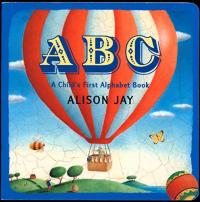
ABC: A Child’s First Alphabet
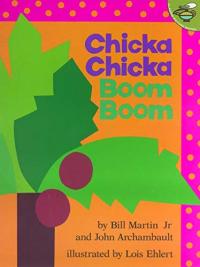
Chicka Chicka Boom Boom
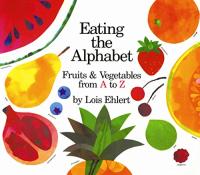
Eating the Alphabet
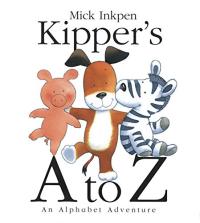
Kipper’s A to Z: An Alphabet Adventure
